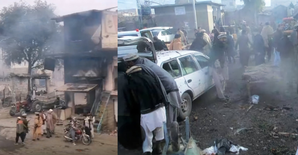Pakistan’s Lahore remains world’s most polluted city despite light drizzle
Lahore, Nov 23 (IANS) Lahore, the provincial capital of Pakistan’s largest province Punjab, continues to remain the world’s most polluted city even though it received light drizzle on Saturday morning that had raised hopes of some improvement in the severe air quality and smog situation in the region that has prevailed for several weeks now.
As per the meteorological department, no major relief is expected from the drizzle with the maximum and minimum temperatures to hover around 24 and 14 degree Celsius, respectively.
“Easterly winds carrying pollutants into Pakistan are compounding the smog, further exacerbating the already dire air quality,” stated Pakistan Meteorological Department.
Several areas of the city, including Gulberg, Ferozepur Road, Canal Road, Thokar Niaz Baig and Johar town continued to witness severe air quality.
According to the International Air Monitor, the Air Quality Index (AQI) of Lahore has been recorded at a perilous and dangerous 404 while segmented AQIs of different areas of the city have been observed to remain at critical levels.
As per the details, AQI of Gulberg was recorded at 529, FC College at 495, Valencia Town at 483, Defense Phase 5 at 465, Garden Town at 433, Wapda Town at 412, Ferozpur Road at 412, Shimla Pahari at 404 and Johar Town and Township at 372.
The Punjab government, which has announced the reopening of educational institutions and given relaxation in timings for markets, has been forced to reimpose restrictions in various cities, including Lahore, Multan, Faisalabad and Gujranwala. As per the imposed restrictions, markets must close by 8 pm, including weekends, except for bakeries and pharmacies.
Air pollution during winter occurs due to the cold air trapping dust, vehicle emissions, and stubble burning by farmers, thus deteriorating air quality massively.
Environment experts have expressed fears and told citizens to avoid unnecessary outdoor activities, stating that the concentration of harmful chemical substances in the air is at least 55 times higher than the World Health Organization (WHO) recommended safety levels.
–IANS
hamza/as




